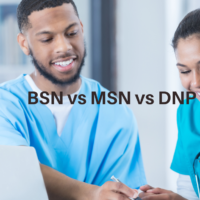PRISMA Framework for Systematic Literature Review
The most prominent systematic literature reviews (SLRs) for healthcare research in 2024 is the PRISMA framework for systematic literature review. The role of identifying, synthesizing, and evaluating review results for evidence-based studies is best left to a PRISMA statement.
In healthcare research, PRISMA is an acronym for Preferred Reporting Items for Systematic reviews and Meta-Analyses. It’s a 27-item checklist designed to help clinical research authors improve transparency in their systematic literature reviews. A PRISMA statement elaborately covers aspects of a manuscript including the title, introduction, abstract, approaches, findings, discussion, and funding models.
The Four Key Elements of a PRISMA Framework
For a systematic literature review to record success, it should manifest these four key traits:
- A well-formulated, specific question.
- A reproducible methodology that avoids bias.
- Sources review data from multiple databases.
- An inclusion and exclusion criteria that is standard and predetermined.
From 1986 to 2024: A Brief History of PRISMA SLR Framework
The earliest known form of the PRISMA framework dates back to April 23rd, 1986, in Lima. A multidisciplinary group of researchers set the threshold for evidence-based reporting to assess the benefits and dangers of healthcare interventions. We’ve chronic childhood malnutrition and its risk factors to thank for this ingenious SLR!
The Swift Evolution of PRISMA SLR
A 29-man group of research methodologists, review authors & editors, consumers, practicing clinicians, and medical journal publishers developed PRISMA in 2005. After a three-day meeting and electronic correspondence, they drew a 27-item checklist and flow diagram to review literature evidence.
Ever since, there have been consented extensions notably in 2009, 2015, and 2020. There are adaptations as young as 2024; with future prospects of further extensions to cater for emerging clinical research needs.
Notable Updates in PRISMA Statement
Adjustments in previous PRISMA statements feature enhancements such as:
- Tailored diagrams for updated reviews.
- Additional scoping reviews.
- Flexibility to account for evolving methodologies.
Some common extensions and adaptations of PRISMA since 2015 include:
#1: PRISMA-P
These adjustments are protocol-specific. PRISMA-P, as published in 2015, aimed at facilitating the development and reporting of systematic review protocols.
#2: PRISMA for Scoping Reviews (PRISMA-ScR)
Scoping reviews helps to justify a systematic review of the literature. The intent is to help readers develop an understanding of core concepts, relevant terminology, and key items to report.
#3: PRISMA-S
This adjustment focuses on the unique role of information specialists and librarians in literature searches’ reproducibility.
#4: PRISMA DTA (Diagnostic Test Accuracy) Studies
The main objective is reinforcing diagnostic and specific requirements of reporting for systematic reviews and meta-analyses (test accuracy studies) in abstracts.
#5: Outcome Measurement Instruments (OMIs) and COSMIN (COnsensus-based Standards for the selection of health Measurement INstruments) Initiatives
Previous PRISMA statements missed key outcome information in published reports. This extension aims to plug those leaks.
How Beneficial are PRISMA Guidelines to Healthcare Research?
Of all available SLRs, PRISMA is taunted as the most efficient, trustworthy, and with the highest reproducibility rates. The other five major benefits of using this SLR include:
- PRISMA framework has the highest scientific merit of all meta-analyses/ scientific review models due to its high transparency.
- Most scholarly journals endorse and reference the PRISMA statement in their guidelines to clinical research authors.
- PRISMA reviews identify and prioritize future nursing research.
- Addresses questions and deficiencies that individual studies under other SLRs miss.
- PRISMA statements generate and evaluate theories on why and how medical phenomena occur.
Question: Can I Use the PRISMA Framework for Qualitative Healthcare Research?
Answer: Yes. The PRISMA statement contribution to existing knowledge necessitates its application in systematic literature review checklists for qualitative clinical data analysis.
The Components of a PRISMA Framework
The PRISMA framework for systematic literature review has three main components:
- A checklist with 27 elements.
- A four-phase flow diagram, And
- An elaborate explaining document.
The PRISMA (2020) Checklist and Explanation Document
The table below details the 27 key elements of a PRISMA (2020) checklist. There’s also an expanded column that details updated reporting recommendations for each item.
| Section and Topic | Item # | Checklist Item | Location (Where Item is Reported) |
| TITLE | |||
| Title | 1 | Identifies report as a systematic review | |
| ABSTRACT | |||
| Abstract | 2 | See Abstracts checklist | |
| INTRODUCTION | |||
| Rationale | 3 | Rationale for review in context of existing knowledge | |
| Objectives | 4 | Explicit statement of objective(s) or question(s) | |
| METHODS | |||
| Eligibility Criteria | 5 | Inclusion and exclusion criteria, how studies are grouped for syntheses | |
| Information Sources | 6 | Databases, registers, websites, organizations, reference lists, or other sources. State date of last search / consultation | |
| Search Strategy | 7 | Search strategies, filters and limits used. | |
| Selection Process | 8 | Inclusion criteria assessment methods, retrieved report / record / data’s independent reviewers, and automation tools used | |
| Data Collection Process | 9 | Data collection methods, obtaining / reviewing / confirming data from investigators, and any automation tools used | |
| Data Items | 10a | List and define outcomes for which data were sought | |
| 10b | List and define variables e.g. participant & intervention characteristics and funding sources. Describe assumptions about missing or unclear information | ||
| Study Risk of Bias Assessment | 11 | Specify methods of assessing risk of bias including tool(s) used, reviewers who assessed each study, if they worked independently, and automation tools used | |
| Effect Measures | 12 | Specific outcome effect measure(s) such as risk ratio or mean difference in results synthesis or presentation | |
| Synthesis Methods | 13a | Describe processes that decided which studies were eligible for each synthesis e.g. (tabulate study intervention characteristics against planned groups (See #5) | |
| 13b | Explain data preparation methods for presentation / synthesis. Include information such as handling missing summary statistics and data conversions | ||
| 13c | Describe tabulation methods or visual displays of results in individual studies and syntheses | ||
| 13d | Describe methods used to synthesize results and rationalize choices. Describe the model(s), method(s) to identify the presence and extent of statistical heterogeneity, and software package(s) used in meta-analysis | ||
| 13e | Methods used to explore possible causes of heterogeneity among results e.g. subgroup analysis and meta-regression | ||
| 13f | Describe sensitivity analyses to assess robustness of synthesized results | ||
| Reporting Bias Assessment | 14 | Methods used to assess risk of bias due to missing results in a synthesis arising from reporting biases | |
| Certainty Assessment | 15 | How to assess certainty (or confidence) in the body of evidence for an outcome | |
| RESULTS | |||
| Study Selection | 16a | Describe results of search and selection process from the number of records identified in the search to the number of studies included in review, ideally using a flow diagram | |
| 16b | Cite studies that meet the inclusion criteria, but which were excluded, and explain why they were excluded | ||
| Study Characteristics | 17 | Cite each included study and present its characteristics | |
| Risk of Bias in Studies | 18 | Present assessments of risk of bias for each included study | |
| Results of Individual Studies | 19 | For all outcomes, present: (a) summary statistics for each group
(b) An effect estimate and its precision e.g. Confidence /credible interval using structured tables or plots |
|
| Results of Syntheses | 20a | For each synthesis, briefly summarize the characteristics and risk of bias among contributing studies | |
| 20b | Present results of statistical syntheses conducted | ||
| 20c | Results of investigations of possible causes of heterogeneity among study results | ||
| 20d | All sensitivity analysis to assess robustness of synthesized results | ||
| Reporting Biases | 21 | Assessments of risk of bias due to missing results (arising from reporting biases) for each synthesis assessed | |
| Certainty of Evidence | 22 | Present assessments of certainty in the body of evidence for each outcome assessed | |
| DISCUSSION | |||
| Discussion | 23a | Provide interpretation of results in context of other evidence | |
| 23b | Discuss limitations of evidence in the review | ||
| 23c | Limitations of the review processes used | ||
| 23d | Implications of results on practice, policy, and future research | ||
| OTHER INFORMATION | |||
| Registration and Protocol | 24a | Registration information for the review, including register name and registration number, or state that the review wasn’t registered | |
| 24b | Indicate where the review protocol can be accessed, or state that a protocol was not prepared | ||
| 24c | Describe amendments to information provided at registration or in the protocol | ||
| Support | 25 | Describe sources of financial or non-financial support for the review, and role of funders in the review | |
| Competing Interests | 26 | Declare any competing interests of review authors | |
| Availability of Data, Code and Other Materials | 27 | Report which of the following are publicly available and where: template data collection forms; data extracted from included studies; data used for all analyses; analytic code; other materials used in the review. | |
Fig 1.1 : An adapted PRISMA (2020) Framework Checklist
( Source: Page MJ, McKenzie JE, Bossuyt PM, Boutron I, Hoffmann TC, Mulrow CD, et al. The PRISMA 2020 Statement: An Updated Guideline for Reporting Systematic Reviews. BMJ 2021;372:n71. doi: 10.1136/bmj.n71 )
The PRISMA Flow Diagram
Fig 1.2: The PRISMA Flow Diagram ( Image: Courtesy)
A PRISMA diagram has two main parts: a flow diagram and a checklist. A checklist has specific items that ensure transparency and completeness in the literature review report. The flow diagram is a visual representation of the search processes and criteria, from identification to inclusion or exclusion.
The Article in Summary
To make a systematic review valuable to its consumers, authors should prepare an accurate, complete, systematic, and transparent literature review. PRISMA statements account for what, how, and why the review was done and the outcomes.
The 27-item PRISMA 2020 checklist provides updated reporting guidance for systematic literature reviews. It reflects advances in identification, selection, appraisal, and synthesis methods of medical studies.
PRISMA is likely to evolve in response to new research methodologies, including AI and machine learning. We anticipate that adjustments will benefit authors, peer reviewers, editors, guideline developers, patients, policy makers, and healthcare providers to optimize their practice. This article hopes for broader use and wider adoption in diverse academic fields beyond clinical research.
Glossary of Literary Terms
Systematic Literature Review (SLR): The academic practice of connecting the research topic to existing knowledge.
Reporting Guidelines: A term in systematic literature review linked to the purpose of PRISMA statements in ensuring structured and complete reporting.
Risk of Bias: A measure of assessing the study’s quality and transparency.
Protocol Registration: Pre-registration of systematic literature reviews for transparency and adherence to legislative / ethical standards.
PRISMA Extensions: Specialized adjustments such as PRISMA-P, PRISMA-ScR, and PRISMA-S for modern systematic literature reviews.
Preferred Reporting Items: Another term for topic relevance in a literature review.
Methodological Rigor: The emphasis on a structured, intensive approach in conducting reviews.
Research Validity: The trustworthiness and reliability of research methodology or its outcomes.
Search Strategy Documentation: Important for extracting systematic review details, especially in PRISMA-S.
Outcome Reporting Bias: A specific type of bias PRISMA addresses, useful in NLP models detecting bias patterns.
Knowledge Translation: The PRISMA framework indirectly contributes to this concept by promoting clear and standardized reporting of findings.

 Nurses can attain excellent outcomes for their patients through evidence-based practice, however, they often don’t share their experiences with fellow nurses in their own or other healthcare facilities. This leads to pointless replication of efforts and propagates clinical approaches that aren’t evidence-based.
Nurses can attain excellent outcomes for their patients through evidence-based practice, however, they often don’t share their experiences with fellow nurses in their own or other healthcare facilities. This leads to pointless replication of efforts and propagates clinical approaches that aren’t evidence-based.
 Earning a master’s degree in nursing is not the end of your academic career. Yet, there are occasions when going forward seems like an impossible task. Maybe you’ve hit a wall and aren’t sure what to do next. In fact, this occurs frequently.
Earning a master’s degree in nursing is not the end of your academic career. Yet, there are occasions when going forward seems like an impossible task. Maybe you’ve hit a wall and aren’t sure what to do next. In fact, this occurs frequently.
 Committing to ongoing learning and education improvement is a requirement for success in the healthcare sector. There are many opportunities for advancement in nursing; the trick is to determine which ones are best for you. Because of this, nurses at all levels are looking for ways to advance in their careers and are trying to figure out what degree will help them land the jobs they want. This typically entails earning a Master of Science in Nursing (MSN) or a Doctor of Nursing Practice (DNP). Some also might think earning a Bachelor of Science in Nursing (BSN) is the best choice.
Committing to ongoing learning and education improvement is a requirement for success in the healthcare sector. There are many opportunities for advancement in nursing; the trick is to determine which ones are best for you. Because of this, nurses at all levels are looking for ways to advance in their careers and are trying to figure out what degree will help them land the jobs they want. This typically entails earning a Master of Science in Nursing (MSN) or a Doctor of Nursing Practice (DNP). Some also might think earning a Bachelor of Science in Nursing (BSN) is the best choice.
